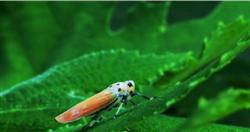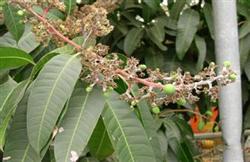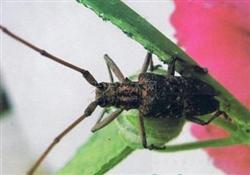Orchard disease of mango: bituminous coal disease

The disease is distributed in Yunnan, Guangxi, Hainan, Guangdong and Fujian provinces (autonomous regions). It is a frequent and major disease and is common in arid areas. Leaf damage can reduce the photosynthetic efficiency of crown, affect the growth of branches and leaves, cause crown weakness, hinder pollination and fertilization of flowering spike, reduce fruit setting rate and fruit appearance quality. The leaves affected by symptoms are covered with a loose, reticulate black powder layer, which hinders leaf photosynthesis. Mildew is limited to the leaf surface, and the combination with the leaf is not close and easy to erase. During the florescence, the black mold layer covered the inflorescence, spike and lateral floret, which affected the pollination of the flower ear, resulting in a decrease in fruit setting rate; the small fruit was easy to fall off due to the influence of the mold layer, and the affected fruit had dirty pericarp, poor appearance and easy to induce postharvest diseases in the later stage of fruit growth. There are two kinds of common pathogens: Capnodium mangiferae. The disease caused by Cladosporium [Cladosporiumherbarum (Pers.) Lk.ExFr.] Causing tobacco mildew, both of which are called bituminous coal disease. The primary infection source of the disease comes from branches and old leaves, and the pathogen can reproduce all the year round in southern Guangdong and Hainan provinces. the degree of the disease is related to the population density of honeydew-secreting insects and meteorological factors. In areas with obvious spring drought (western Hainan, Leizhou Peninsula in Guangdong, Baise in Guangxi, Yunnan) or drought years in fruiting period, Homoptera (flat-beaked leafhopper, aphids, shell insects, white moth wax cicada, etc.), Thysanoptera (thrips) and mites have high population density and are rampant, sucking young leaves and young fruit juices, while excreting a large amount of amino acids, sugars and waxes adhering to the surface of the host tissue. These feces are a good substrate for the reproduction of soot bacteria, and the mycelium propagates rapidly to form a large amount of black mold layer covering the surface of branches, leaves and fruits. The disease occurred more seriously in orchards with old trees, shade and poor cultivation management. The control method ① should strengthen the orchard cultivation management, prune reasonably, the old orchard should retract the crown, cut off the inner chamber branch, withered branch and disease and pest branch, improve the ventilation and transmittance of the orchard, and reduce the hidden places of leafhopper, aphid, thrips and mites. ② regularly controls leafhoppers, aphids, thrips and mites in the dry season. ③ regularly apply fungicides to inhibit mold growth, using 75% chlorothalonil wettable powder 800-1000 times or 40% methomyl glue suspension 600-800 times, spray tree crown, application interval of 15-20 days, can be applied continuously for 2-3 times.
- Prev

Comprehensive control technology of mango soot disease
The main results are as follows: (1) the reason of mango flower and fruit drop is 1. When mango meets low temperature, overcast and rainy weather during flowering and young fruit stage (the temperature is lower than 11.5 ℃) and lasts for a long time, the flower and fruit drop is serious. The flower ear suffers the death, appears a large number of abnormal fruit, aborts the fruit, easy to cause the natural shedding. 2. Diseases and pests harm the pests of mango.
- Next

Treatment of "empty bosom" of mango
Longicorn beetles belong to Coleoptera and Cerambycidae, which occur in mango producing areas of southern China. By feeding on the branches with larvae, the growth of the damaged plants is weakened, and in serious cases, the damaged branches are easy to be broken by the wind. The insect produces one generation a year, and it overwinters mainly as larvae, and a few pupae or adults can also overwinter in the pores. The following year.
Related
- Moge, come on! The staff of the peasant association in the producing area of cantaloupe were frightened when the crowd gathered.
- Causes and Solutions of low Fruit setting rate of Apple
- Symptoms and control measures of passion fruit virus disease
- Fruit growing lesson: how do apple orchards keep high yields?
- Can you build orchards in the mountains? What are the pros and cons?
- How to manage the coloring period of Crisson grape?
- This paper introduces the processing technology of two kinds of fig products.
- How much is a month for retired teachers in rural areas by 2020?
- How can strawberry planting increase sugar content? We should pay attention to management in many aspects.
- What are the cultivation techniques on how to improve the yield of golden fruit?

